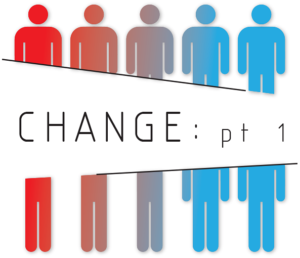
The word change evokes many emotions and reactions, even more in a business setting. One of the best definitions that I have found is listed on the Merriam-Webster site: change is “to undergo a modification of”. This definition, which includes the example of leaves changing color in the fall, is a great visual of what happens when we go through change.
Change, in general, is an everyday challenge in its unpredictability universally. It does not matter where you are or what industry you are in, at the moment. No one is exempt from feeling its effect in their personal or professional life; it is even harder to implement in an organization.
At OMT-Veyhl, we have made tremendous progress in our focus on changing the way we do business, from the leadership to huge improvements made on the manufacturing floor. As a result, continuous improvement has become a part of our company culture as we are committed to finding best practices, methods, or strategies to implement successful organizational change.
These best practices always need to be explored more in their individual application and their importance to organizational change. Learning about specific models for implementing change is great but it always looks different in real life with its own set of challenges.
Why Resist Change?
Leaders and managers, on all levels, need to first understand the reasons people are resistant to change. The most basic reason is fear of the unknown, which can be real or perceived. Because people have a tendency to feel that they are not valued, the change can be seen as a threat to job security, employment status, or even loss of control in the current role. These are all legitimate fears. A few people may be willing to change, but most will only embrace or accept change if it is forced.
Change also takes time. Why is it that we, as individuals or companies, expect others to change what they do immediately, yet we have a tendency to stay the same? Do we assume that it is easy because the change implementation is happening in a professional or an organizational setting?
Many of our day-to-day decisions are based on assumptions, not facts or understanding of our human tendencies. We all know what assumptions make out of you and me. The people driving change need to remember that they are working with human beings and be aware of the effect that changes have on the organization and employees. Change should be made slowly and methodically, in some cases.
How Resistance Shows Up
Change can affect the organizational environment and culture, whether it is active resistance or passive response. Most active resistance happens vocally by a group of people or specific person being critical of, argumentative toward, or opposing the change being implemented.
Passive resistance, on the other hand, is harder to deal with because a person might publicly support an initiative yet oppose it quietly. They can be resistant behind the scenes through procrastination, lack of follow-through, improper communication, or by just plain ignoring it.
How Can Organizations Overcome Resistance?
Most leaders do not understand that employees usually resist for a variety of reasons. These reasons can range from disagreeing with the decisions to lack of confidence in the direction and the people leading the change.
Employees also need to do their part by being receptive to the change and understanding that the managers or leaders are not out to get them, but that change is actually for the betterment and growth of the company. Change is inevitable. So, how do you overcome resistance?
Is there a more simplistic approach to implementing change in manufacturing industries? Based on my research and observation, the best way to overcome resistance to change is to alleviate those common fears.
Companies can help their people see the benefits of change in a number of practical ways such as 1) putting more focus on planning any type of change, 2) clearly communicating the level of change and the impact, and 3) increasing employee engagement through encouraging participation.
Look for Part 2 of this article next month, covering the first topic of putting more focus on having a clear plan for change management.
Karen Mulki, Corporate Performance Project Manager


Recent Comments